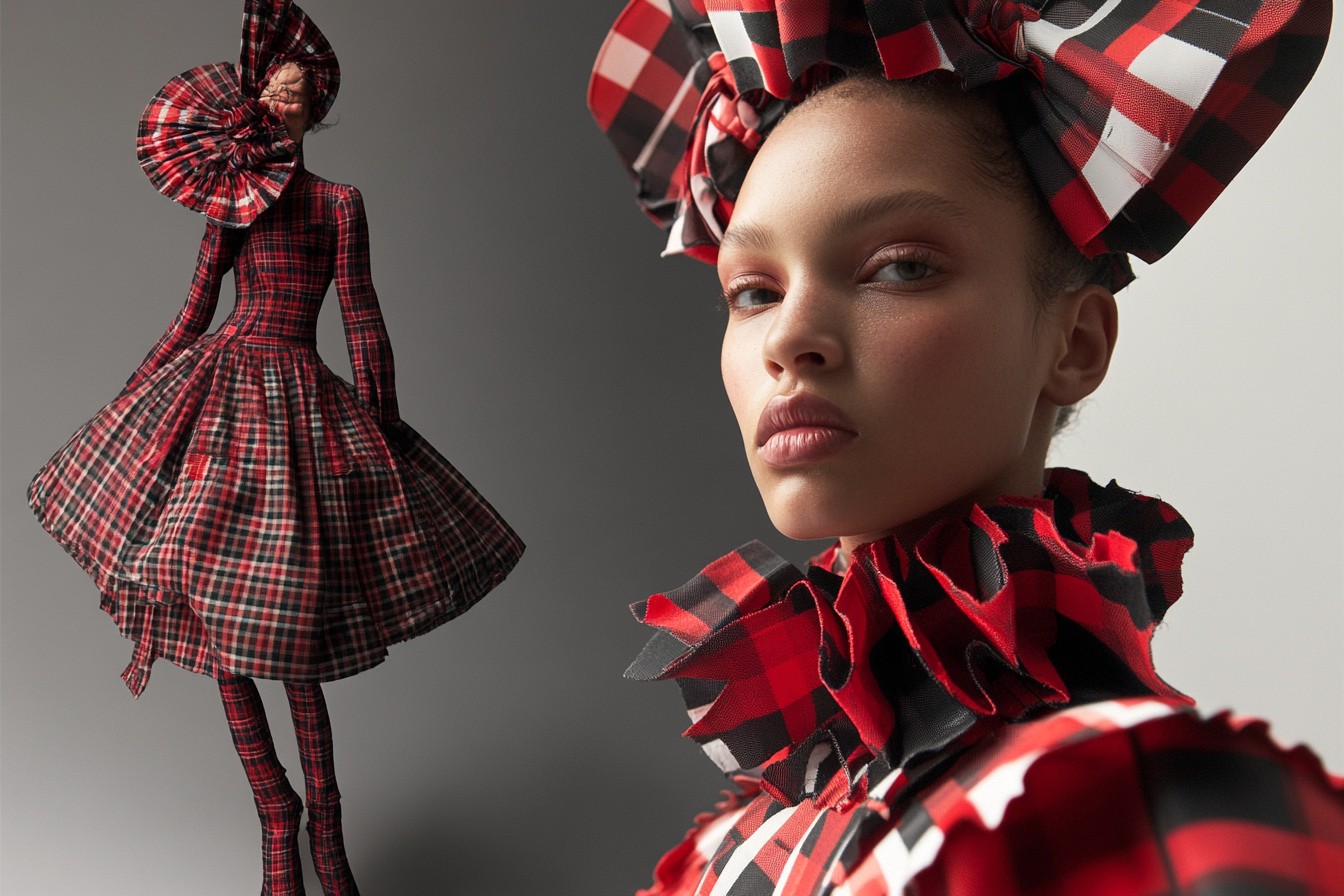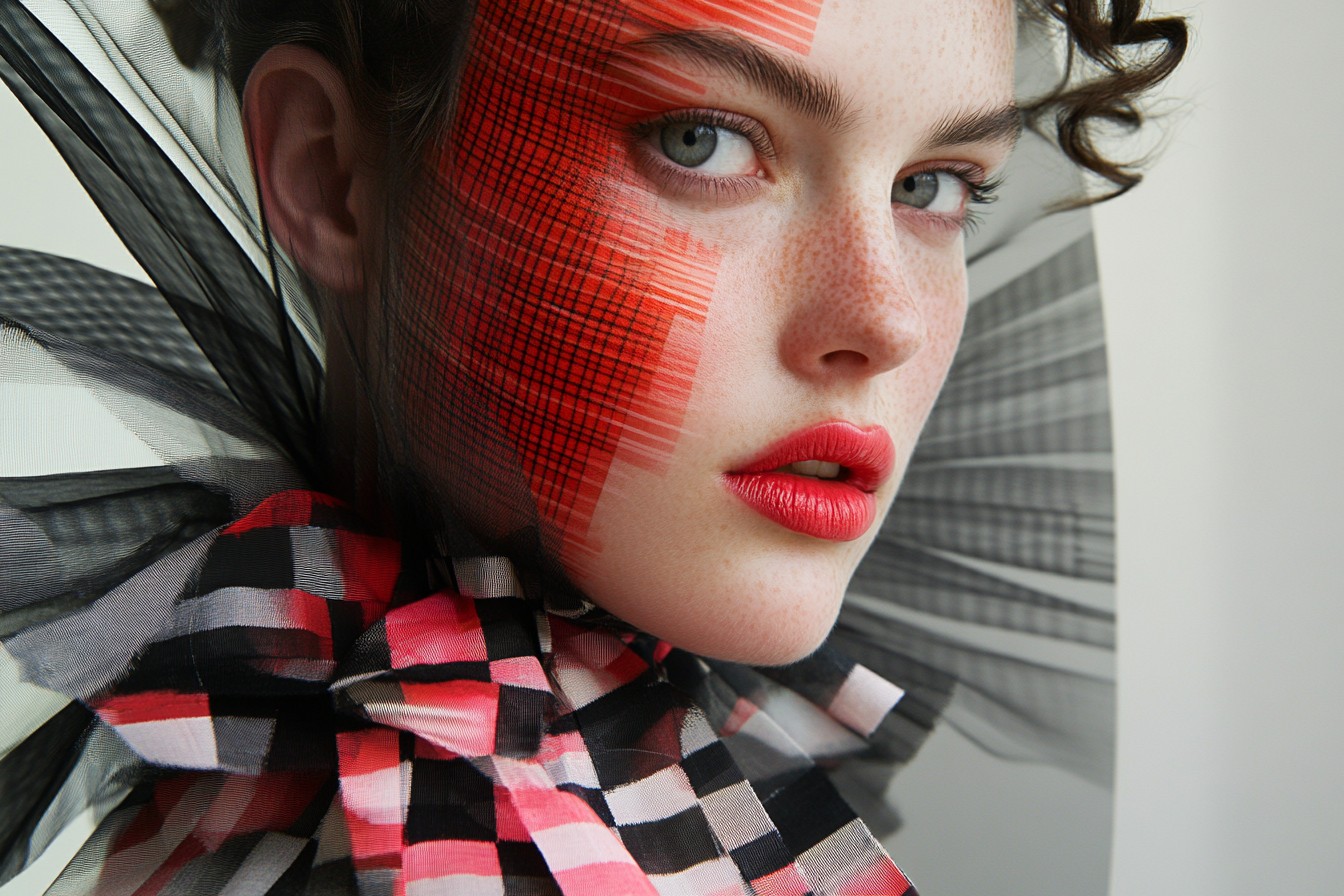The first time I wore tartan to London Fashion Week, I thought I was being ironic and subversive. This was 2010, and my vintage Vivienne Westwood tartan mini worn with massive platforms and a leather jacket felt like a punk-inspired middle finger to the minimalist aesthetic dominating runways at the time. I was insufferably pleased with myself until a Scottish fashion editor friend sidled up to me at a show and whispered, “That’s my family’s tartan, you know. My grandmother would have a fit.” I spent the rest of the day feeling like a cultural appropriator with exceptionally sore feet.

Looking back, I wasn’t being nearly as original as I thought. British heritage patterns have a curious lifecycle in fashion—they begin as functional textiles with specific cultural significance, get adopted (or co-opted, depending on your perspective) by designers who subvert their traditional associations, become mainstream, fall out of favor for being “too obvious,” and then eventually circle back as either ironic statements or genuine appreciation for craft and heritage. It’s the circle of style, if you will.
What’s interesting about our current fashion moment is that we’re seeing a resurgence of British heritage patterns that goes beyond the ubiquitous Burberry check. Don’t get me wrong—that iconic camel, black, white, and red plaid deserves its place in the pantheon of great pattern design. But there’s a whole world of British textile history being rediscovered, reinterpreted, and reappreciated by designers both established and emerging. And unlike my clueless tartan moment, today’s approach seems to involve more understanding of these patterns’ origins and significance.
Let’s start with tartan itself—perhaps the most recognizable of British heritage patterns and certainly the most codified. Historically associated with Scottish clans (each with their own distinctive colorway and pattern), tartan has experienced more fashion revivals than almost any other heritage textile. From Queen Victoria’s infatuation with all things Balmoral to Vivienne Westwood’s punk appropriation in the 70s, from Alexander McQueen’s controversial Highland Rape collection to its periodic appearances as a schoolgirl signifier, tartan refuses to stay confined to its Highland origins.

What feels different about tartan’s current revival is its flexibility. Rather than using it as a shorthand for either tradition or rebellion, today’s designers are exploring the pattern’s graphic qualities and emotional resonance. At Loewe, Jonathan Anderson (himself from Northern Ireland) has been incorporating tartan into collections in ways that feel both respectful and innovative—think asymmetric tartan skirts paired with sculptural knitwear, or unexpected tartan panels on otherwise minimal coats.
Meanwhile, Scottish designer Christopher Kane has reclaimed his heritage with tartan that feels personal rather than performative. His recent use of the Black Watch tartan (dark blues and greens in a subtle check) showed how the pattern can feel thoroughly modern when the proportions are played with and it’s paired with unexpected textures like patent leather or technical nylon.
Even traditional Scottish mills like Johnstons of Elgin and Lochcarron, which have been producing tartan for centuries, are finding new audiences through collaborations with contemporary brands. Lochcarron’s recent work with buzzy London label Toast resulted in tartan pieces that feel authentic without being costume-y—the kind of clothes that acknowledge heritage without being imprisoned by it.

Moving south from Scotland, Yorkshire’s herringbone and tweed traditions are enjoying a similar renaissance. Tweed, that nubbly textile historically associated with country sports and stuffy academics, has been undergoing a slow but steady reimagining. The rigid gender associations—men in tweed jackets with leather elbow patches, women in prim tweed skirts—have given way to more playful interpretations.
This past London Fashion Week, I counted no fewer than fifteen tweed bucket hats, spotted unexpected tweed crop tops at an emerging designer showcase, and coveted a spectacular pair of wide-leg tweed trousers that somehow managed to look more Phoebe Philo than Professor McGonagall. Yorkshire mills like Abraham Moon & Sons, which has been producing tweed since 1837, are finding their traditional fabrics in demand not just from heritage brands but from cutting-edge designers looking for textiles with character and provenance.
What makes the tweed revival particularly interesting is how it’s being combined with other textures and patterns in ways that feel fresh rather than fusty. I recently fell in love with a Cecilie Bahnsen dress that combined delicate, almost ethereal white cotton with panels of robust brown herringbone—a juxtaposition that highlighted the beauty of both textiles. Similarly, Japan’s Comme des Garçons has long played with British woolens, inserting tweed panels into otherwise avant-garde constructions in ways that create dialogue between tradition and innovation.

Houndstooth—that geometric checked pattern of broken checks traditionally used in woolen overcoats—is another British pattern enjoying a creative renaissance. Originating in the Scottish Lowlands but adopted enthusiastically by English tailors, houndstooth has historically straddled the line between aristocratic and workwear associations. It was as likely to be found on a gentleman’s overcoat as on a farmer’s jacket, making it one of the more democratic of British textiles.
Today’s interpretations play with scale and color in ways that reinvigorate the pattern. Oversized “puppy tooth” (yes, that’s really what larger-scale houndstooth is called) has appeared everywhere from Celine coats to Ganni dresses. The traditional black and white colorway has expanded to include everything from subtle tone-on-tone versions to psychedelic color combinations that retain the distinctive shape while creating something entirely new.
Even the humble Prince of Wales check (also known as Glen plaid), that gentle geometric pattern beloved by Edward VIII and countless British businessmen, is finding new expressions. Traditionally associated with men’s suiting, it’s been reclaimed and reworked into everything from voluminous dresses at Simone Rocha to slouchy oversized coats at Stella McCartney. The pattern’s inherent versatility—it can read as either subtle or statement depending on scale and color—makes it particularly adaptable to contemporary reinterpretation.

What I find particularly heartening about this revival of British heritage patterns is the attention being paid to their production as well as their appearance. Many designers working with these textiles are choosing to source from the historic mills that have been producing them for generations—places like Robert Noble in the Scottish Borders, Fox Brothers in Somerset, or Marling & Evans in Yorkshire. These mills not only maintain the authentic techniques and quality that give these fabrics their distinctive character but also represent a crucial part of British manufacturing heritage that has been under threat for decades.
There’s also a sustainability angle that shouldn’t be overlooked. These traditional British textiles were designed to last—to withstand harsh weather, regular wear, and the passage of time. In our current climate of legitimate concern about fashion’s environmental impact, investing in clothing made from these durable, natural fabrics represents a step away from disposability and toward longevity. My own grandfather’s tweed jacket, now worn by my brother, is over sixty years old and still looks better than most things produced today. That kind of durability feels increasingly valuable.
The revival isn’t limited to luxury or designer fashion, either. On the high street, brands like Toast, Jigsaw, and even M&S have been incorporating authentic British textiles into their collections, often naming the mills they’ve sourced from as a mark of quality and provenance. This democratization allows more people to access these heritage patterns in ways that feel contemporary rather than costume-y.

For anyone looking to incorporate these patterns into their wardrobe without feeling like they’re playing dress-up in someone else’s cultural signifiers (my tartan faux pas still makes me cringe), I’d recommend starting with accessories or single pieces rather than head-to-toe pattern. A houndstooth scarf, a tweed bag, or a tartan lined jacket can reference British heritage without overwhelming your personal style.
It’s also worth considering the scale and color of the pattern in relation to how much attention you want it to draw. A Black Watch tartan blazer in traditional dark green and navy reads as a subtle nod to heritage, while the same cut in a bright red Royal Stewart tartan makes a much bolder statement. Neither is wrong—it’s just about matching the pattern to your comfort level and overall aesthetic.
For those concerned about cultural appropriation when it comes to clan tartans—a legitimate consideration given their historical significance—many mills offer “district tartans” which are associated with regions rather than specific families, or contemporary designs that use the tartan technique without claiming historical lineage. Alternatively, patterns like herringbone, houndstooth, or check offer British heritage appeal without the same level of specific cultural association.
What I’ve come to appreciate about British heritage patterns, after years of both studying and wearing them, is how they connect us to a continuing thread of textile history. The Burberry check, for all its iconic status, is actually a relative newcomer, having only been introduced in the 1920s and not used as an outward-facing pattern until the 1960s. By contrast, some Scottish tartans have documented histories stretching back to the 18th century, while techniques like herringbone date back even further.
When we wear these patterns today, whether in traditional or reinterpreted forms, we’re participating in a conversation between past and present. The best contemporary uses of heritage patterns acknowledge this dialogue—respecting the craft, skill, and cultural significance of these textiles while allowing them room to evolve and remain relevant.
I’ve come a long way from my misguided tartan moment at fashion week. These days, my wardrobe includes a carefully considered selection of British heritage patterns: a tweed blazer from a Yorkshire mill that I wear at least weekly through autumn and winter, a subtle Prince of Wales check trouser that’s become a workwear staple, and yes, even some tartan—though now I’ve taken the time to understand its particular pattern and history. Each piece feels like it has a story woven into its fabric, a connection to both tradition and the creative possibilities of reinterpretation.
That’s the real magic of these heritage patterns making their comeback. Beyond their obvious visual appeal, they offer something increasingly precious in fashion: authenticity, craftsmanship, and continuity. In a world of fast fashion and fleeting trends, there’s something profoundly satisfying about wearing a pattern that has stood the test of time—and will likely still be relevant long after we’re gone, ready for the next generation to discover and reinterpret anew.
